By Liam McPherson
Photos by Chris Roussakis
The Carleton Immersive Media Studio (CIMS) has created a special interactive exhibit for Canada’s 150th anniversary, right across the street from Parliament Hill.
For the last several years, CIMS has been hard at work building an information model of the Centre Block. Using the original 1916 construction plans, as well as a series of photographs used to make digital “mesh models” of the structure, the CIMS team was able to create a complete digital representation of Centre Block’s physical and functional characteristics.
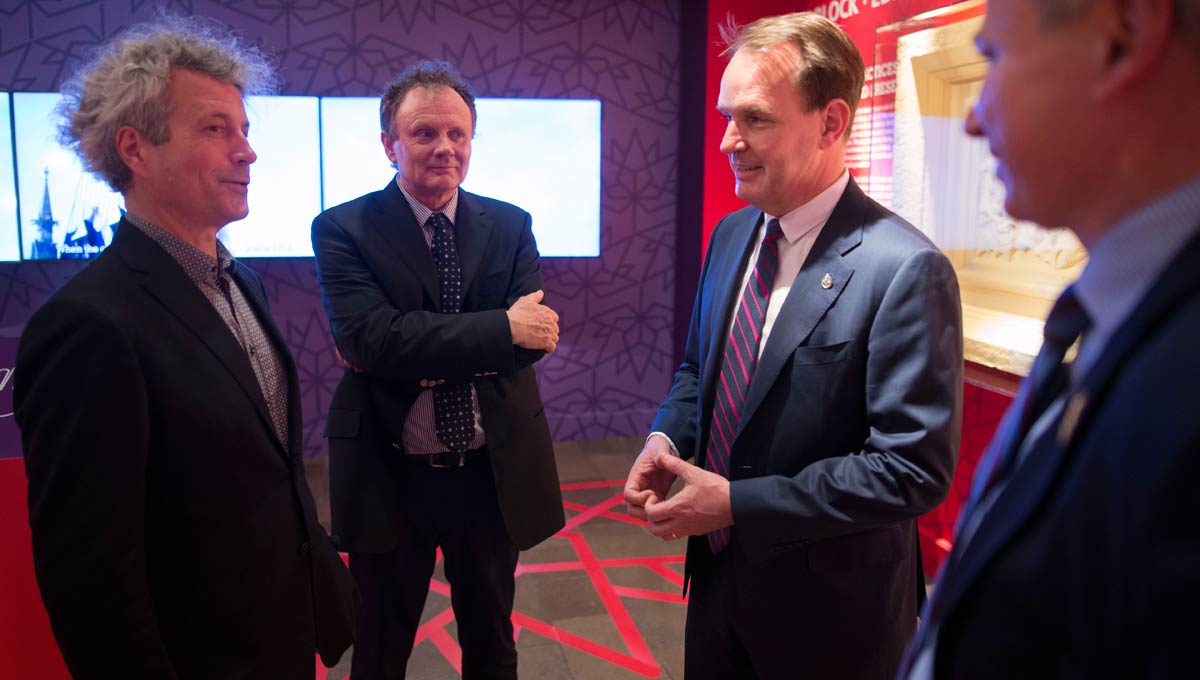
CIMS Director Stephen Fai (left) says the digital modelling project is just a sampling of things to come.
The accomplishment was unveiled in a digital exhibit at the Capital Information Kiosk on May 17. On hand was MP Steven MacKinnon, parliamentary secretary to the Minister of Public Services and Procurement Canada.
The centerpiece of the exhibit is a 360-degree virtual reality reconstruction of the Senate of Canada. Also included is the House of Commons and the Peace Tower, including inaccessible spaces such as the bells and clock area.
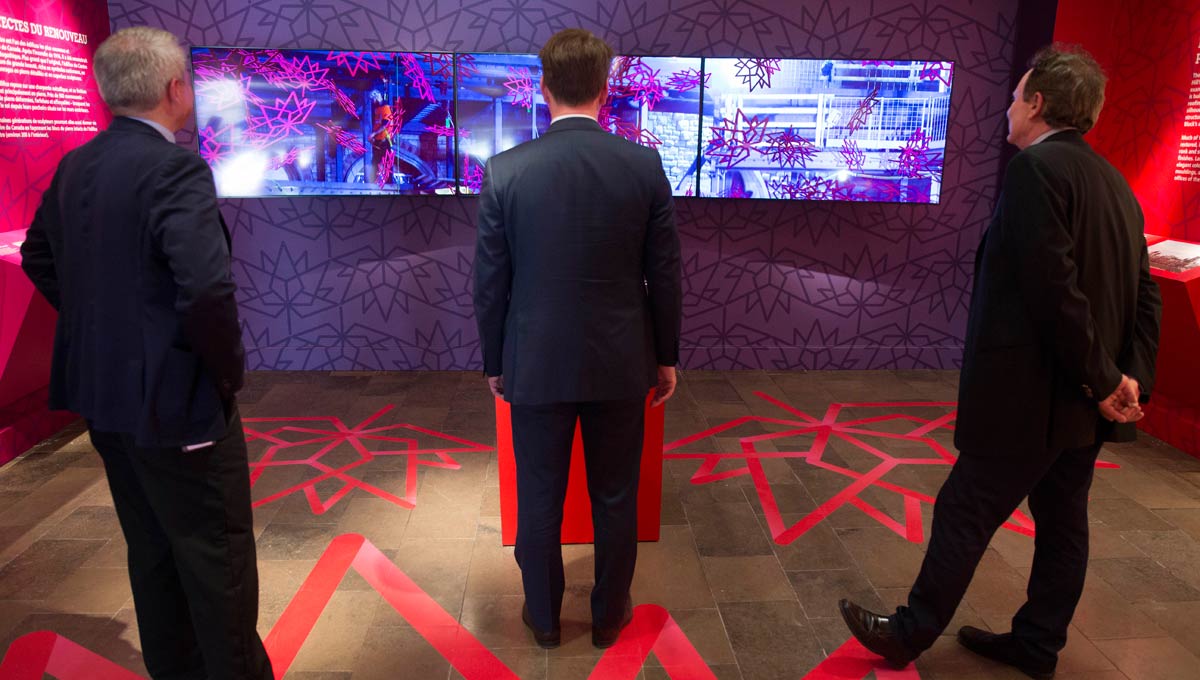
More to Come
CIMS Director Stephen Fai says the high-profile project is just a sampling of things to come.
“This is our first venture into virtual reality, but Public Services and Procurement Canada, which funded the VR kiosk’s development, is interested in us developing more of this kind of content. We get grants or contracts as they come.”
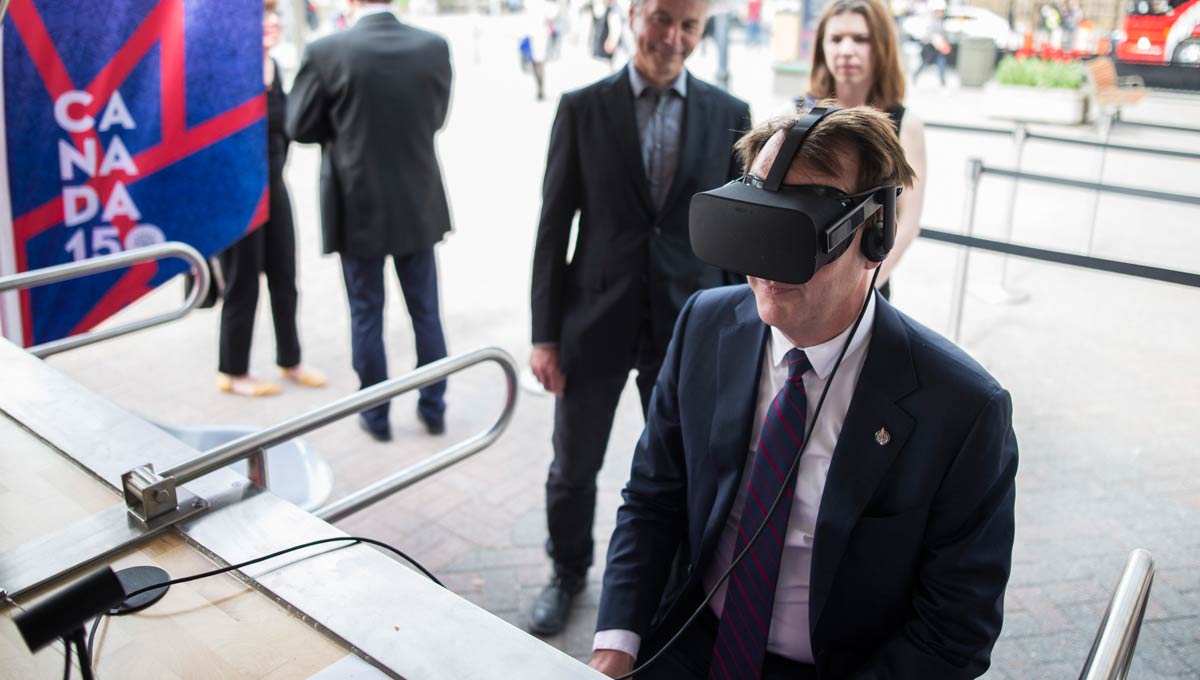
MP Steven MacKinnon tests the VR recreation of the Canadian Senate.
Fai says the exhibit and the virtual reality kiosk (nicknamed the VR Bar) serve as a fantastic example of what CIMS and Carleton University are able to accomplish.
“When you think that there’s a million people who come to Parliament Hill every summer, and they’re going to be seeing this kiosk, it’s definitely going to be a big plus for the university.”
Laurie Smith, manager of research operations at CIMS, says although the development of the VR aspect was recent, the digital modelling of Centre Block took several years. “It’s been very rewarding to go from ‘can we do this?’ to actually designing something new. A lot of the equipment we’re using in our software hasn’t even been available for a year. It’s proceeded very quickly from an idea to the full realization of the project.”
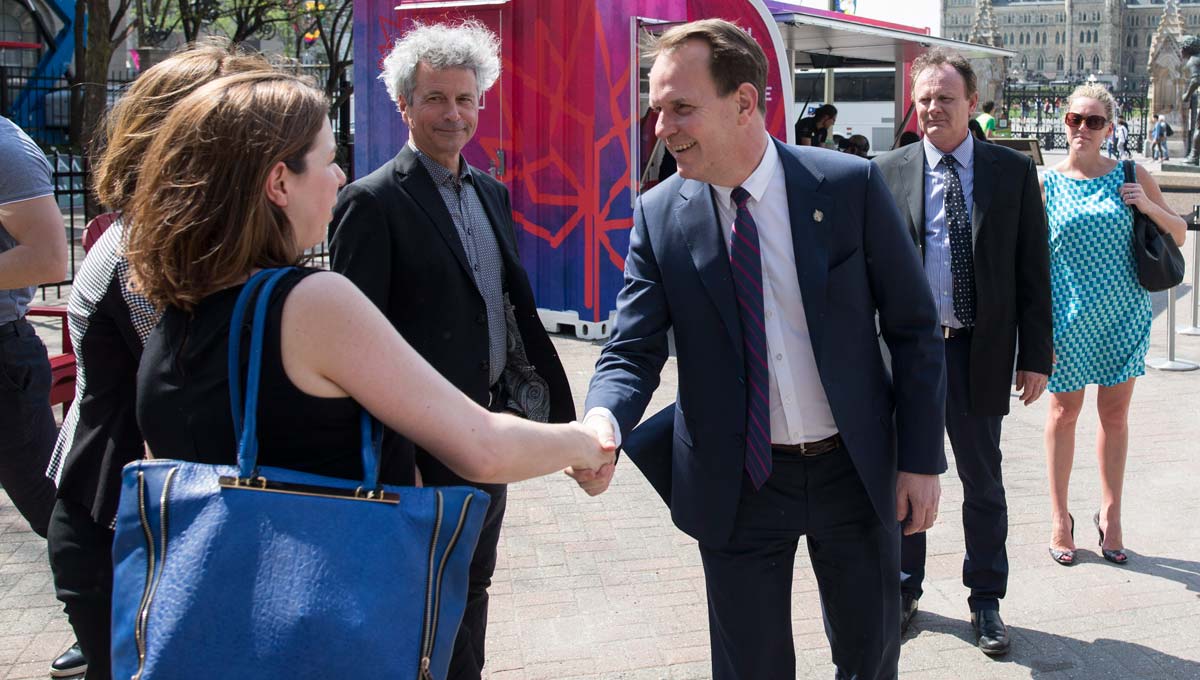
Enhancing the Parliament Hill Experience
Grad student Katie Graham, team lead at CIMS, is proud of the impact their hard work will have on the Parliament Hill experience for Canadians.
“We wanted to create something that would enhance the experience, not just supplement it. I think we’ve really succeeded in doing that.”
Graham is especially proud of what the team was able to accomplish in such a short time.
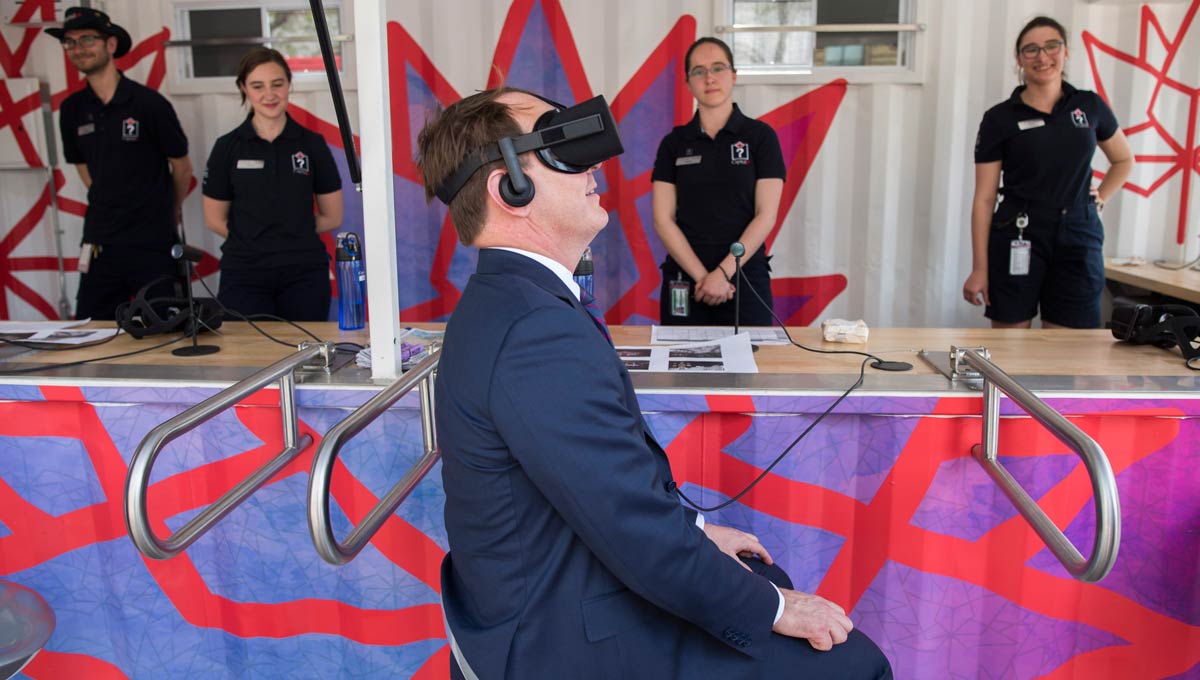
“We’d only been working on the VR part of the project since February, and it’s definitely turned out even better than we anticipated. The people who are actually going to see this project are the same people who are about to go and tour the real thing. So they’re getting their tickets to go to Parliament Hill and they’re experiencing it virtually as well.”
For Graham, it isn’t just about showing off digital technology – it’s recreating an important symbol in Canadian history which will soon be closed for renovations. “I think we’ve succeeded in showcasing the intangible aspects of the Hill in a digital setting. It’s a great way to share parts of Parliament Hill that not everyone will get to see when it shuts down for a while.”
The CIMS exhibit is free and open to the public all summer at the Capital Information Kiosk.
A virtual tour of the Senate foyer, antechamber and chamber — the first public component of the CIMS work — was launched on March 1, 2017. Watch it here.
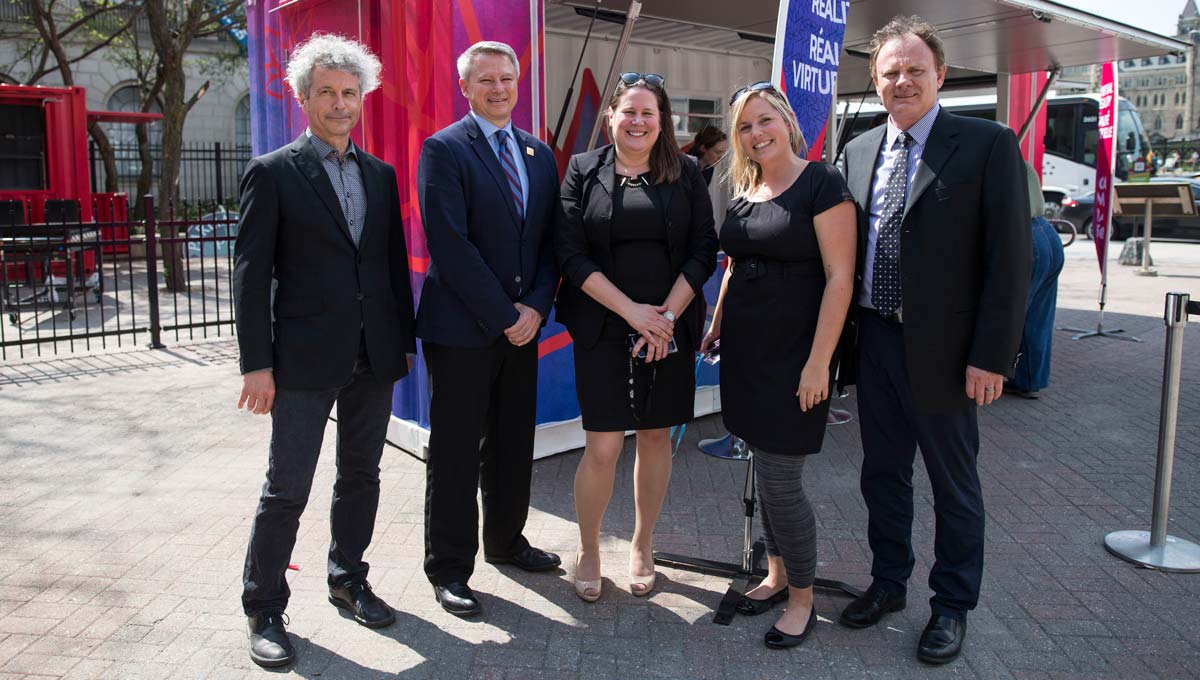
Friday, May 19, 2017 in Events, Technology, Virtual Ventures
Share: Twitter, Facebook



